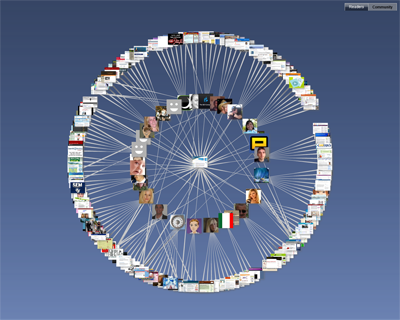Enterprise gamification designers/marketers face a very unique set of challenges.
We must advocate for the concept and win budget. We must launch and deploy the technology successfully, usually within extremely condensed timelines. Assuming we make it through these not-insignificant hurdles, we must advocate for our tool-kits in support of the organization’s objectives.
Gamification Designers/Marketers are Agencies, Not Platform Managers
Gamification is itself a jargon-laden topic, and as such I will resist the urge to refer to these individuals as “gamificators.” The truth is, gamification designers are marketers–and gamification marketers are designers. Regardless of title, these individuals must focus on delivering value to the enterprise the same way that an agency delivers value to their clients.
In fact, assuming a successful launch, every group/division/business-unit will soon become a client. If they do, are you prepared to service them? Have you defined the services that you can provide? Can you communicate this quickly? concisely? intuitively?
4 Steps for Good Enterprise Gamification Design/Marketing
The four steps are designed to be exactly that: quick, concise, and intuitive. In order, they are: set goals, define behaviors, establish rewards/incentives, and frame according to status. As the designer/marketer, you are the agency. Using these four steps, you can collaborate effectively with your clients to design and delivery high-quality programs and user experiences.
1. Set Goals
Setting goals should be the start of any good marketing plan–I’m not the first to suggest it and I won’t be the last. As a gamification marketer, you must push any client to define their marketing goals for you. You cannot possibly understand the marketing goals of every unit within your enterprise–and you don’t need to. Hold your clients accountable for defining their goals for you–and for determining how you will measure performance against these goals.
Rely on your clients for their marketing expertise the same way that they will rely on you for your gamification expertise.

2. Define Behaviors
Step two is different according to your enterprise’s application of gamification. In some cases, you may have layered game mechanics on top of an internal or external community (like EMC), or you may apply them within HR or other applications. Each of these deployments involves the recognition and rewarding of a very specific list of user behaviors.
In a community, for example, the behaviors might include replying or posting to a discussion, posting or commenting on an idea, posing or answering a question, or viewing a certain page or sub-community.
Once you have defined your client’s goal, coach and collaborate to define which behaviors align to the goal. Marketing goals can be very diverse, from increasing awareness to generating leads to motivating user engagement. Make sure to customize the chosen behaviors according to the goal–and receive client approval on the alignment before progressing to step 3.

3. Establish rewards/incentives
Your clients–and maybe you–will see this as the easiest step. It is not. Good gamification relies not only on sophisticated deployment, strong promotion, and well-designed motivational psychology–but also on an advanced reward program. After all, if the user is uninterested in the prize at the journey’s checkpoints, why would they even bother to embark?
Monetary rewards are easier to implement but they are far less meaningful or memorable. Especially in a conference or trade-show environment, your iPad giveaway will be lost in a sea of similar promotions. To achieve differentiation for your program, pursue non-monetary rewards.
Non-monetary rewards focus on delivering status-oriented prizes for your users, including VIP treatment, early access, and special privileges. For example, at future shows, EMC plans to use its gamification program (RAMP) to trigger prizes such as front-row seating at keynote sessions, early access to product information/announcements, and exclusive Q&A sessions with product engineers/managers.

4. Frame according to status
If steps one through three sound like textbook marketing, I’ll give away the secret: they are. Good marketers should always set goals, define relevant behaviors, and include incentives. Step four is where gamification delivers its unique value–and where it requires a unique design.
Once you have set a goal, defined behaviors, and created meaningful rewards, you must coach your client into a full-stop. Pause the process and force them to look backwards through the lens of status. After all, community members and users do not behave in order to make our marketing lives easier. They behave to feel accomplished, to feel a sense of community, and to demonstrate their expertise.
Every gamification program must be framed as a component of a meaningful status for the user. After all, status is gamification’s endgame (badges are not). Explain this to your clients very simply: as a gamification designer/marketer you are building the template for an activity-based resume. Every goal-behavior system we build is a component of this resume. Step four ensures that we never lose track of this goal.

About the Author
TYLER ALTRUP is a Senior Social Media Engagement Manager at EMC Corporation specializing in social metrics, social monetization, and gamification. He is a frequent blogger on all three topics, as well as music and gaming, at TylerAltrup.com. He is currently building an advanced social metrics glossary in order to create a library of advanced social metrics, along with an understanding of their correlative and causal relationships. He also led the recent launch of RAMP, EMC’s new gamification-powered Recognition, Award, and Motivation Program, on the EMC Community Network.
Tyler holds undergraduate degrees from the University of Missouri in Marketing, Latin, and International Studies as well as an MBA from Boston University. When he’s not on the clock, you can find him pwning n00bs on Xbox Live and PSN as TyBlues95. He wears jeans, sneakers, and giant headphones to work (and does not like cubicles). Twitter: @TylerAltrup. LinkedIn: http://www.linkedin.com/in/tyleraltrup








